Just like modern smartphones, the Astell&Kern SE300 features a big screen and the Android operating system, but unlike them it’s focused on one thing and one thing only: audio. A&K’s quest for great portable audio continues with the SE300, which sits in the middle of its range – but in the high part of the market more broadly, with its eye-watering price of £1,899.
Disclaimer: A&K’s UK distributor, HEA Distribution, kindly loaned this unit to me. The SE300 retails for £1,899 in the UK. Further information is available on the manufacturer’s website.
TL;DR: recap
| Pros |
Cons |
| + Amazing build quality
+ Very large power output + Smooth, fast UI + One of the few DAPs with an R2R DAC |
– Very large and heavy
– Very limited options with applications and services you can install – Priced like a luxury item |
Rating: 9/10
Packaging & Accessories
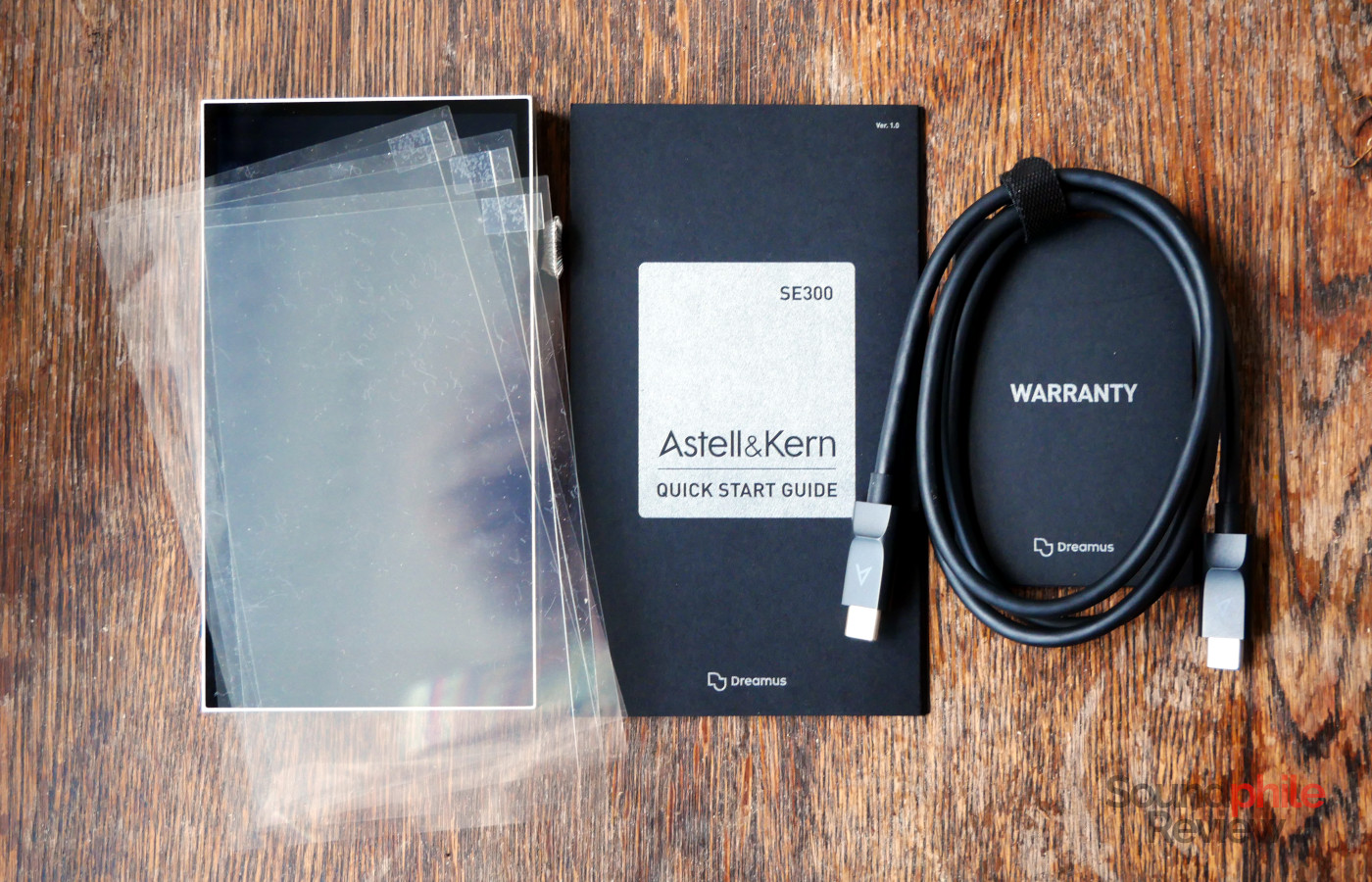
The box contains the device itself, plus a USB to USB-C cable, plastic screen protectors, a quick start manual as well as a microSD card slot protector.
Design & Build
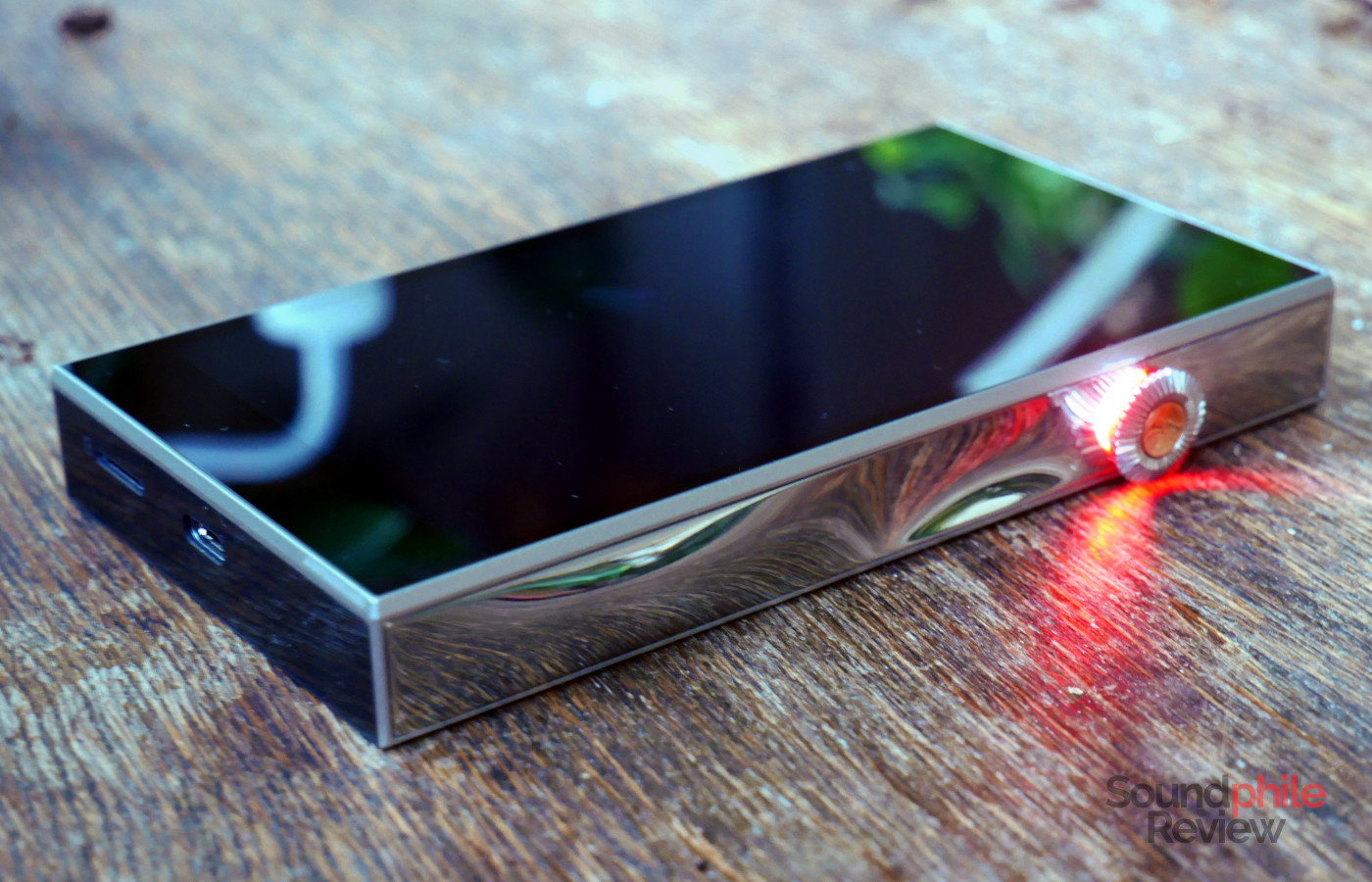
The Astell&Kern SE300 features a design which sits squarely in A&K’s tradition: squared and clear-cut, with a distinctively modern take on it. The body is made of both metal and glass: the top and left sides, as well as the frame around the screen, are made of aluminium, while the right side is made of polished steel and the back and the bottom are made of glass. A peculiar bit of the design is the “wave” on the right hand side: the metal curves out, creating a bit of a bulge on the lower part, and it caves in just below the volume wheel, thus creating a shape which makes holding the DAP with your right hand easier. The indent sits right where my thumb is when I hold the SE300.
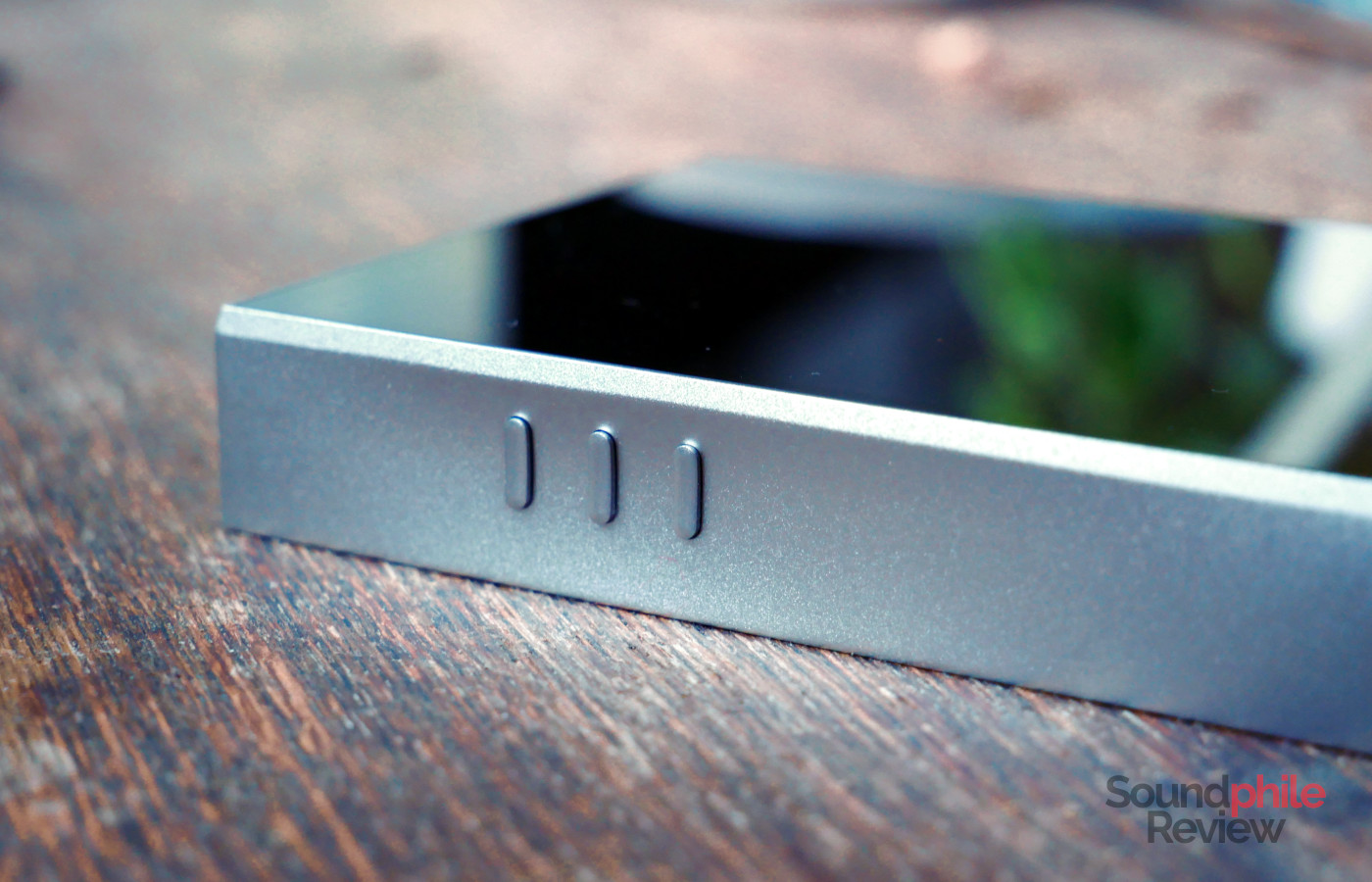
The top side hosts all audio output (3.5 mm unbalanced, 4.4 mm balanced and 2.5 mm balanced jacks) as well as the power button. The volume wheel is on the right hand side. On the bottom we find the USB-C port for charging and connecting the SE300 to devices and computers, as well as the microSD slot.
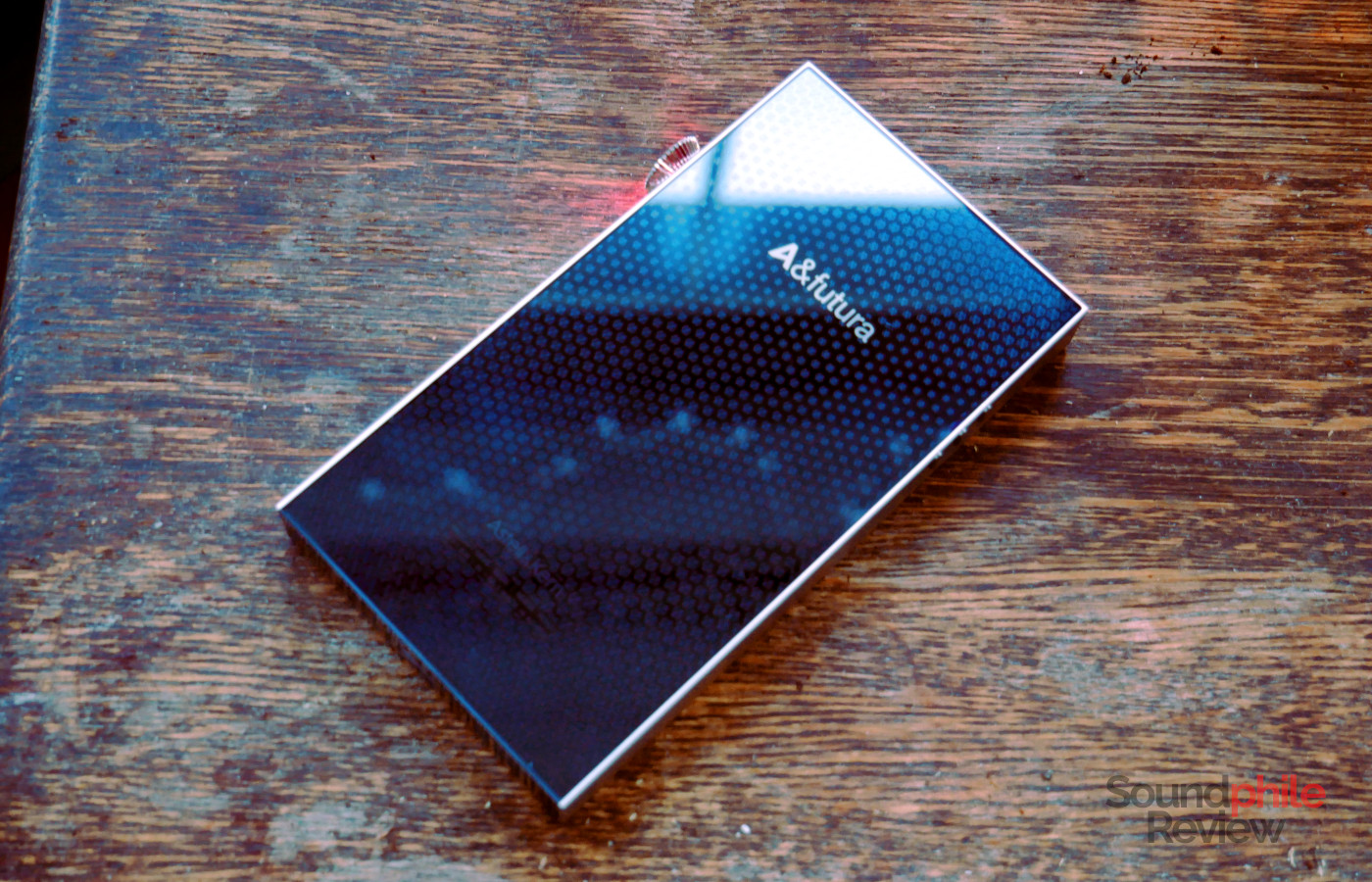
Build quality is extremely high, as one can legitimately expect with a device in this price bracket. The device is built to incredibly strict tolerances, a fact which makes it look like a piece of jewellery.
The screen is very large, at 5.46 inches, and it has high resolution (1920 x 1080) which means that pictures and text are clear and crisp on it. It offers a high level of brightness, which makes it possible to read text even in broad daylight. Unfortunately, however, there is no ambient light sensor to adjust the brightness automatically, which would have been a very welcome feature considering it can be difficult to see the screen and adjust the brightness manually when there is intense sunlight.
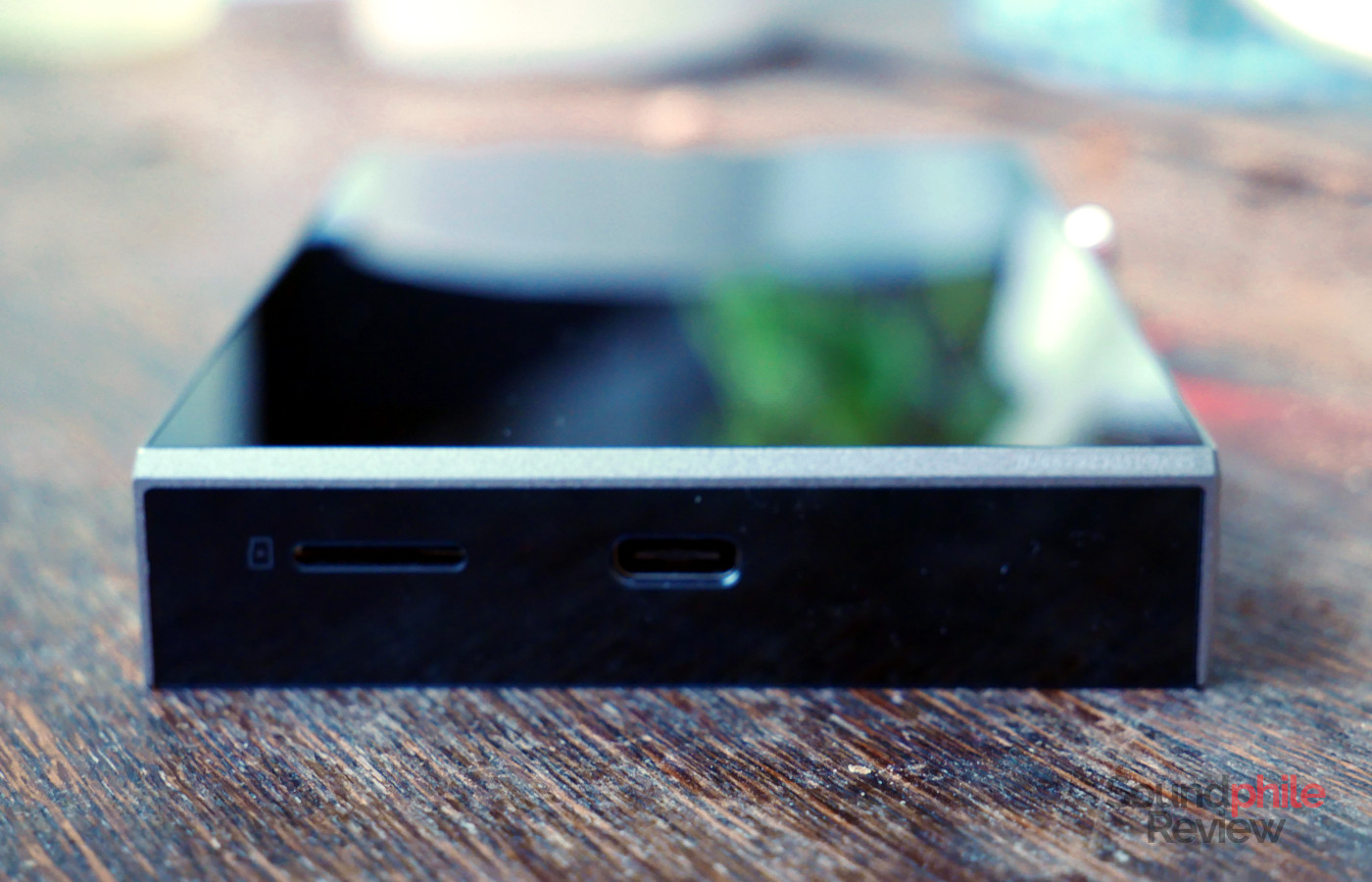
The Astell&Kern SE300 is rather large at 76.5 x 139.5 x 17.6 mm, but it’s not actually that heavy, at 317 g. It still is almost double my already bulky Pixel 7 Pro smartphone, but that does not make it unreasonably heavy and it is handled easily without tiring one’s hands. On a more personal note, I find it sits in direct contrast with the trend of making devices lighter, which in my opinion makes the SE300 more of a device to use while at a desk, on the sofa or in bed, rather than on the go; more broadly, I think it is a device that is better suited at replacing a desktop setup, instead of being something you use while commuting. While you absolutely can use it while commuting, the weight (and, to some extent, the size) are considerably larger than modern phones and this can make it difficult to fit the device in a pocket comfortably.
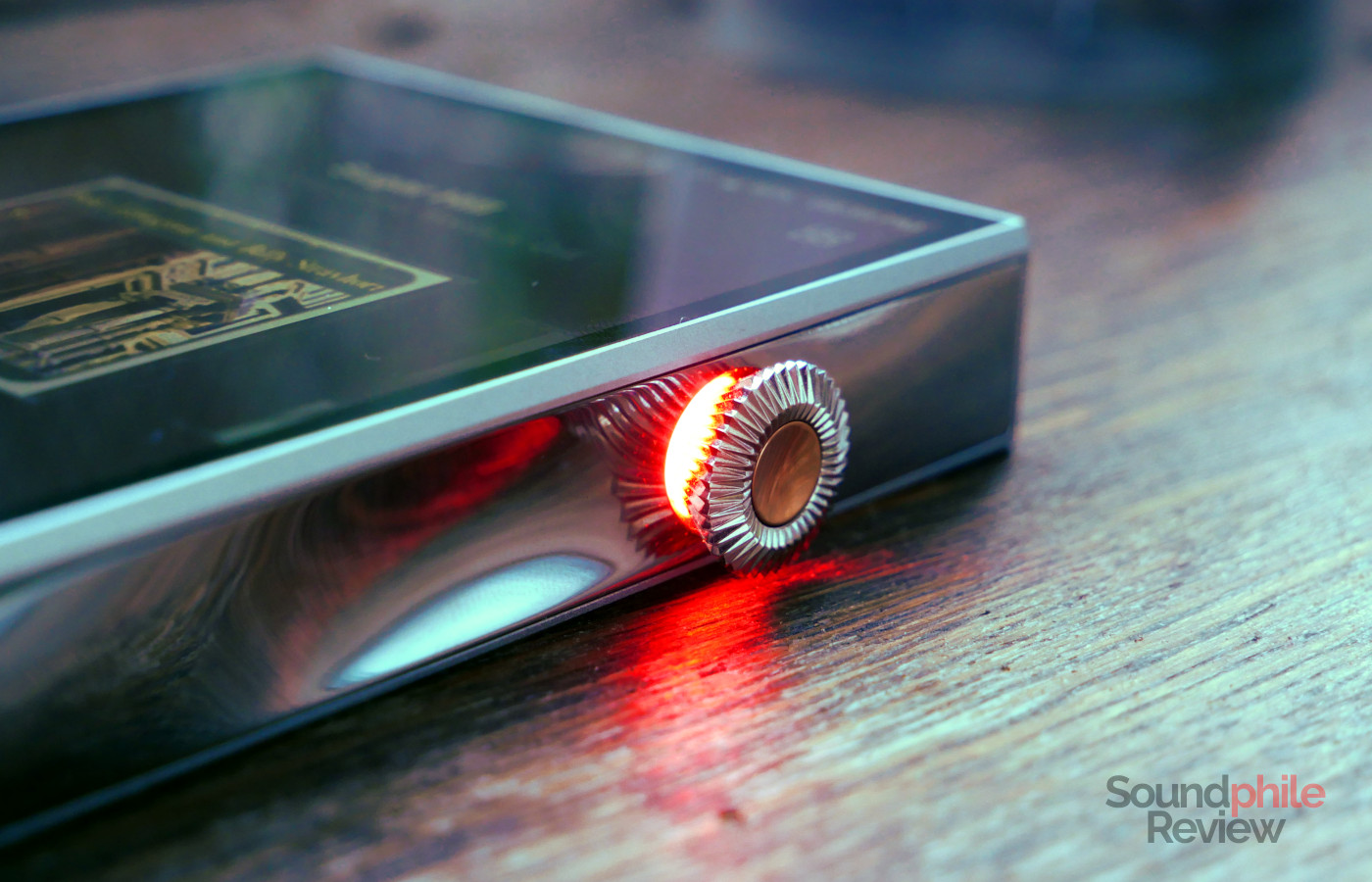
The volume wheel is very similar as the one used on the SP3000, except for one thing: instead of being encased in the device’s body, it protrudes from it quite a bit. While this makes it easier to turn it, it also means that the wheel was often turned accidentally when I had the device in my pocket. Thankfully the volume can be locked while the screen is off, so this isn’t as big of an issue. On the other hand, I am worried that the mechanical stress caused to it by simply having it in your pocket might be enough to wear it out over time. That said, the volume wheel works remarkably well and has a bit of “weight” to it, so you need to a apply a tiny bit of force to turn it; it has both audible and tactile clicks when you turn it. Behind it is a status LED which lights up whenever you are reproducing music on the device: it lights up in red (16 bit), blue (24 bit), green (32 bit) and violet (DSD).
Specifications
Astell&Kern SE300 |
| DAC chip | Discrete R2R ladder DAC |
| Amp chip | A&K Teraton Alpha |
| Suitable headphones impedance | N/A |
| Output impedance | 1.3 Ω (all outputs) |
| Maximum output power | Single-ended:
Balanced:
|
| THD+N (@1 kHz) | 0.006% (all outputs) |
| SNR | 114 dB (single-ended with low gain) 115 dB (all other cases) |
| Operating System | Customised Android |
| Supported formats | PCM up to 32 bit / 768 kHz DSD up to DSD512 MQA File formats: WAV, FLAC, WMA, MP3, OGG, APE, AAC, ALAC, AIFF, DFF, DSF |
Astell&Kern does not disclose which processor powers the device, and they instead simply state that it’s a “quad-core CPU”. Aside from tearing apart the whole unit, there is no way to know precisely which CPU it is, also because A&K blocks the installation of software which would be able to reveal this detail – which is not, in the grand scheme of things, overly important, it has to be said. There are 256 GB of on-board storage, which can be further expanded using a microSD up to 1 TB; this is ample space for any music collection, even very large ones.
The DAC is a fully discrete R2R unit, which sets the SE300 apart from the competition. The only other DAP I have tried with an R2R DAC is the HiFiMAN R2R2000, which however opted for an R2R DAC integrated on a single chip – a Burr-Brown PCM1704K. In this case we find a whole ladder of resistors laid out on the PCB. We actually find two ladders, one per channel, so that the SE300 offers a “true” balanced setup; each ladder has 48 resistors and is capable of decoding 24-bit audio.
The R2R DAC stage is preceded by an FPGA which takes care of upsampling the content. The SE300 offers both a “NOS” and an “OS” operating mode for PCM content; the first stands for “non-oversampling” and it means that the FPGA serves the digital signal as it is to the DAC, whereas the oversampling mode takes the signal and upscales it to up to 8 times the original resolution (so 44.1 kHz becomes 352.8 kHz, 48 kHz becomes 384 kHz).
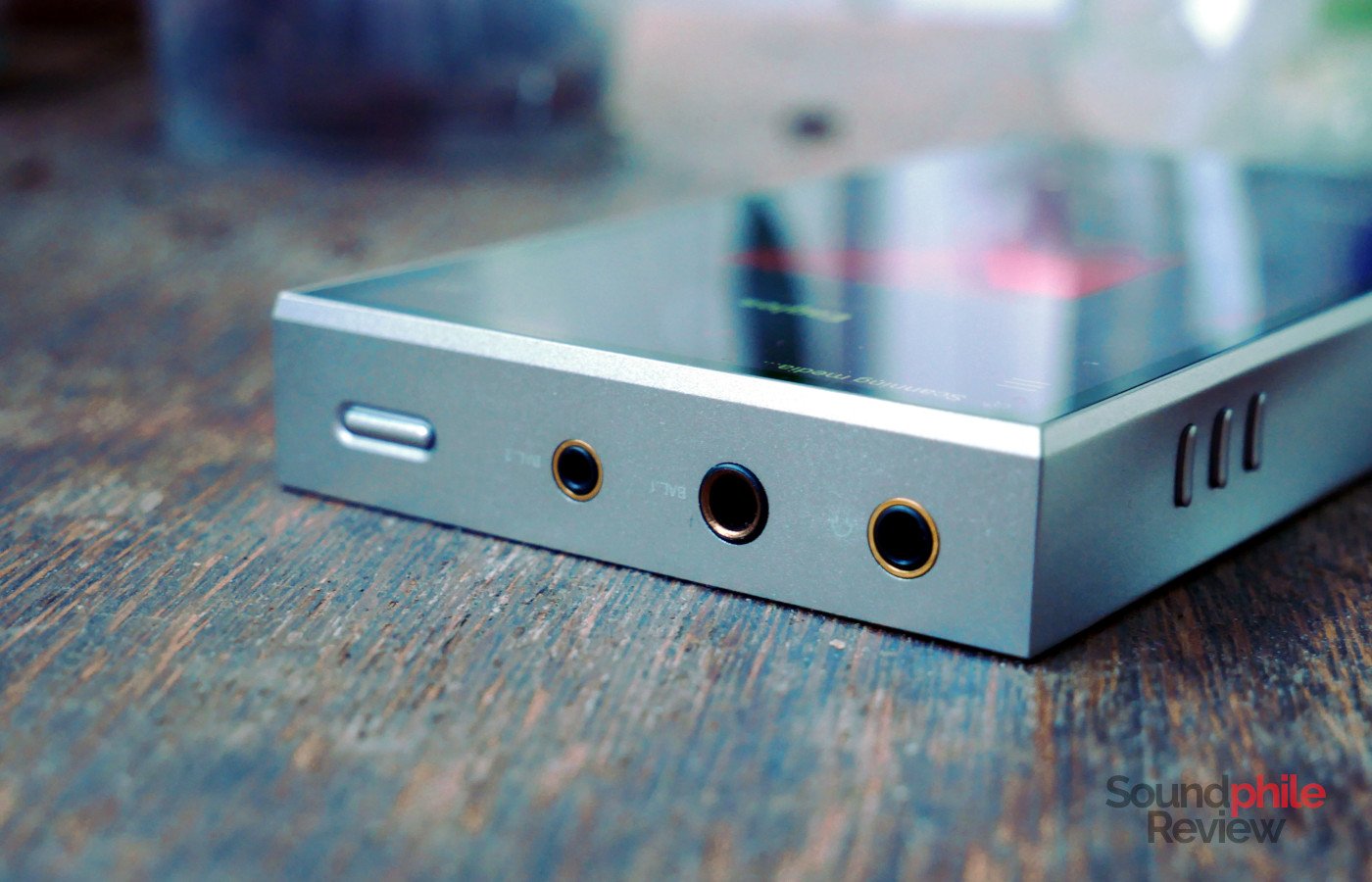
Amplification is done by Astell&Kern’s own Teraton Alpha module: this is proprietary tech that the manufacturer has developed and which allows you to switch between Class A and Class AB amplification. The amplifier is able to output a lot of power for a portable device: it is rated for up to 3 Vrms for single-ended (which equates to 281 mW at 32 Ω) and 6 Vrms for balanced (1,125 mW at 32 Ω), which is more than enough to drive even notoriously hard headphones like the HiFiMAN HE-560.
It should be noted that the 3.5 mm jack can also be used to output optical S/PDIF signal, so you can use the DAP as a digital transport and use it with an external DAC which supports optical input.
Looking at wireless capabilities, the SE300 offers up to WiFi 5 connections (so 802.11a/b/g/n/ac for those who still prefer the IEEE denomination) and Bluetooth 5.0 with the SBC, AAC, aptX HD and LDAC codecs. It is interesting to note that the Astell&Kern SE300 can act as a Bluetooth sink, meaning it can receive music from other devices and play it. The connection is solid and reliable.
Software
Like all the other recent offerings by Astell&Kern, the SE300 too uses Android as the underlying operating system. It is unclear which version A&K chose to power the device. The OS has been so heavily customised, however, that it is basically unrecognisable: every single part has been altered to create a system which works better for a DAP from the perspective of UI and UX.
The main screen offers a view of all albums on the device with a slideshow of all the cover arts, framed as if they were inside a CD jewel case. The effect is really convincing and the animations are very smooth. The lower strip hosts the OS controls and right above it is the “now playing” interface complete with buttons to skip to the previous or next track, as well as to play or pause. There are also a menu button to the top left, which allows you to access various features, and a button to the top through which you can access other views on the music (songs, albums, artists, genres, ecc). You can also access this by swiping to the left on the main screen above or below the album art.
The hamburger menu on the left allows you to access all the various features: AK Connect, to play music over the local network via DLNA; “services”, to access the various apps for streaming services; AK File Drop, to transfer files to the DAP over the network; Roon Ready; equaliser; AMP (which isn’t an acronym, but the selector for gain and amplification class); NOS/OS; timer settings (auto power off, screen timeout and sleep timer). The “services” include TIDAL, V-Link and Qobuz. You can download more: Spotify, Amazon Music Moov, Deezer, FLO, Apple Music, KKBOX, AWA, Yandex Music, Bugs and Melon.
The notification shade holds the quick settings: a series of buttons, the brightness slider as well as a button to safely remove the microSD. The quick settings buttons can be customised and rearranged, and they include: WiFi, Bluetooth, NOS/OS, amp class, EQ on/off, car mode, line out, gapless playback on/off, volume wheel lock (when screen is off), ReplayGain on/off, AK Connect, AK File Drop and a shortcut to open the settings app.
The settings applications includes everything you need to customise your experience and access all relevant settings. There are various sections:
- network and connections: WiFi, Bluetooth, Bluetooth codec choice, AK Connect, AK File Drop and Roon Ready;
- sound settings: NOS/OS, amp class, equaliser, gapless, line out and L/R balance;
- system settings: track queueing options, ReplayGain, quick settings in the notification shade, CD ripper, USB mode (DAC or file transfer), USB Audio (DSD or DoP), S/PDIF conversion, car mode (which makes the interface easier to use while driving);
- more system settings: volume limit, screen brightness, double-tap screen to wake the device, LED indicator on the volume wheel, date & time, device name, language (there are English, Korean, Chinese, Russian, German, Franch and Spanish);
- even more system settings: keyboard, timer settings, download folder location, system update, system information and system reset.
The equaliser is very complete, as it offers 20 bands, each with 0.1 dB adjustments, or a fully parametric setup. One thing to note is that the volume lowers significantly when you enable it.
One possible limit with the Astell&Kern SE300 is that the Android operating system it uses is completely locked down; this means that you can only install applications which reside in a whitelist made by A&K. This makes sure that the applications that you can install on the device won’t damage it nor create issues, but on the other hand it means you won’t be able to take advantage of apps and services which A&K hasn’t thought of (as a practical example, Jellyfin or Symphonium). While A&K’s approach is understandable and it won’t really limit what we could call the “normal” usage of the device, hopefully they will provide more options in the future for “power users”. In other words, A&K’s players are (at the moment, at least) a closed platform.
Battery Life
How much battery life you can get from the Astell&Kern SE300 depends a lot on the volume level as well as on the headphones you pair it with, but from my tests it is able to work for about 10 hours when using hard-to-drive headphones which require you to push up the volume to 50/150. That’s slightly below A&K’s own estimate of 12 hours, but still a more than acceptable figure.
Sound
I tested the Astell&Kern SE300 with a variety of headphones, including the HiFiMAN HE-560, the Sennheiser HD 6XX and the AFUL Magic One.
As the SE300 offers a lot of power, it can drive even notoriously difficult headphones like the HE-560 with no issues: I can get them to what I perceive as a high volume at 60/150 with low gain. In fact, one possible issue with the SE300 is that it can be too powerful for low-impedance, high-sensitivity earphones, even with the low gain enabled.
In terms of sound signature, I cannot hear any difference between the SE300 and other solid-state sources. The DAP sounds perfectly transparent and neutral to me, which is ultimately what matters as you don’t really want it to alter the sound it reproduces. This is what I expect of high-end gear: neutrality, so that you have a point of reference and you can use headphones to colour your sound if you want that.
I could hear no differences between the OS and the NOS modes. In fact, I tested them and found no differences before checking out what they were, so it could be said that I avoided any possible bias. Looking at a rational explanation of why they don’t sound differently, it’s easy to come up with one: the FPGA cannot create information which isn’t there, so it would be quite a feat if you could actually hear more things than in the original file (and it’s actually quite a feat that I couldn’t hear any differences, as upsampling often introduces distortions and unwanted effects). I am not really able to hear differences between the Class A and Class AB modes, either.
Final Thoughts
The Astell&Kern SE300 doesn’t redefine the category nor does it come up with never-before-seen extravaganza. But here’s the thing: it doesn’t need to. It is a powerful, capable DAP that is extremely well designed and built, and it has a superb software experience on top. Its only “fault”, if we can call it that, is that it is quite pricey at nearly 2,000 quid and is therefore an object not many will be able to afford. That’s obviously not a flaw in and of itself, but there’s something more to say about it: considering it sounds perfectly neutral and that you won’t really hear a difference between the SE300 and another DAP or desktop setup, is this device worth its steep cost?
When it comes to the build quality, the materials, the technology that’s inside the device, and the power it offers, the SE300 surely is a very convincing device that firmly sits in the premium category. Now, as for if it’s worth nearly £2,000, that’s an answer only you can give – this is, ultimately, a luxury device in every possible sense, and as such I think it goes beyond the considerations on price that apply to “normal” devices. What you get for the price is an astounding amount of power, a superb build quality with high-end materials, a refined and smooth UX and UI as well as a constant flow of updates which improve the experience. That doesn’t sound like a bad deal at all.

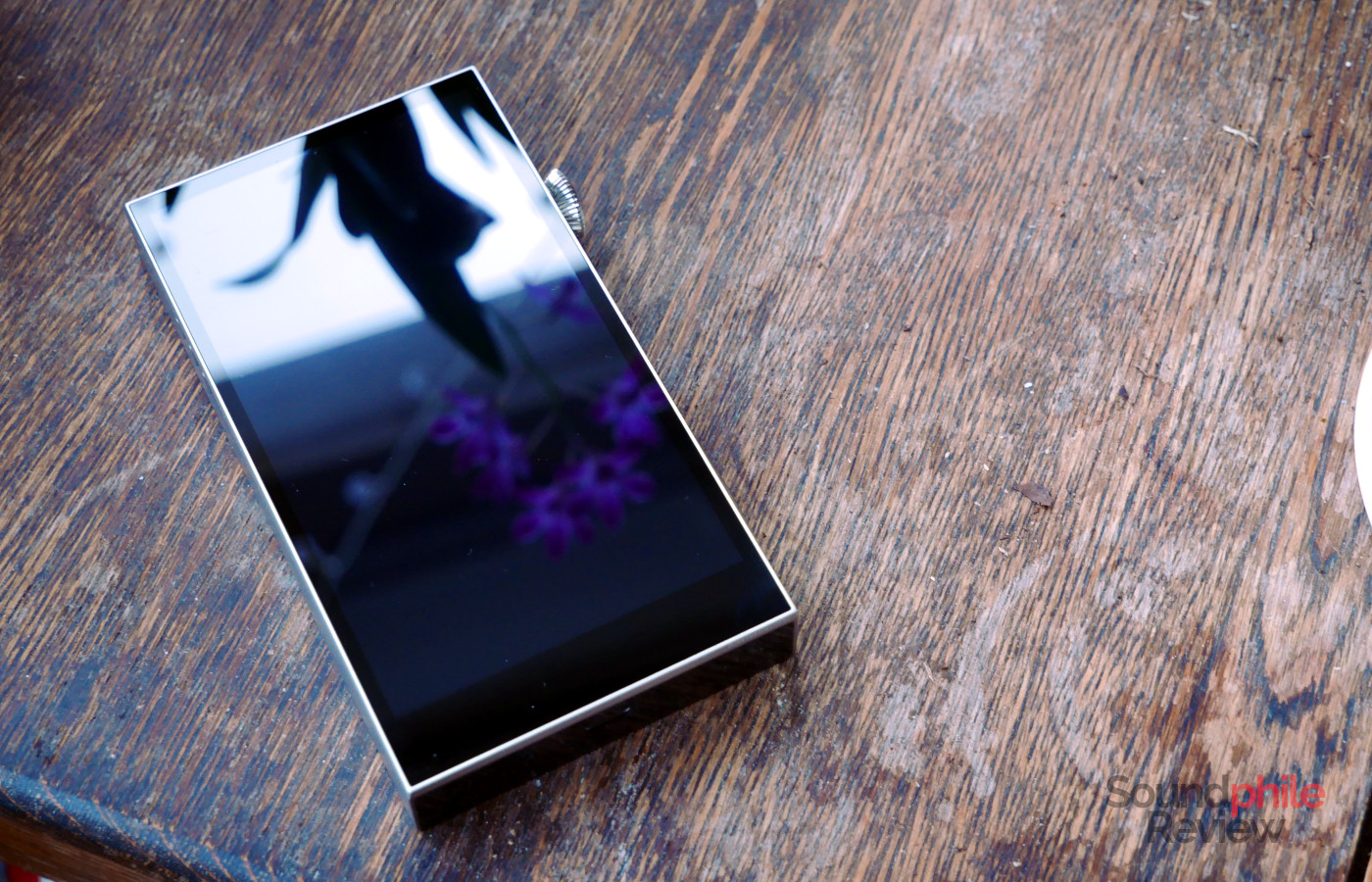








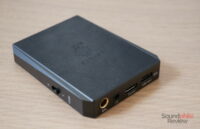
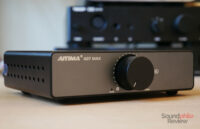

Well, what’s the point of testing any of them? They’re all the same, then. I have the Hugo 2, but I can’t alter it so much. It’s truly great, but this is a total all-rounder.
When you buy anything these days, is it truly worth it?
Hello,
The point is exactly to see if they’re worth the asking price. I personally think after some point things wade into “proving a point” or “luxury for luxury’s sake” territory, but that doesn’t mean there aren’t people out there who like that. If you have the money and you like A&K’s UX and design/build, their players are very nice. But I wouldn’t spend that money expecting the sound to be magically better than anything else because that simply won’t happen (although we all wish it would…).